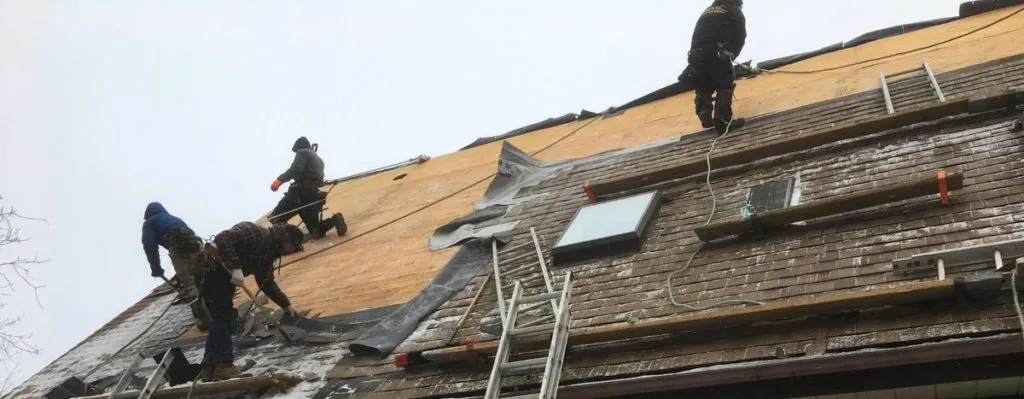A new roof is a major investment, so it’s important to make sure it’s installed properly. One of the most important factors to consider is the weather. In cold weather, the adhesives used to hold shingles in place may not work properly, leading to a leaky roof.
This article will discuss when it’s too cold to install roof shingles. We’ll also provide tips for roofing in cold weather.

When Is It Too Cold?
In general, it’s best to avoid installing roof shingles when the temperature is below 40 degrees Fahrenheit (4 degrees Celsius). At these temperatures, the adhesives used to hold shingles in place may not work properly.
The adhesives used to hold shingles in place are typically made of asphalt or rubber. These adhesives are designed to soften and melt when exposed to heat. In cold weather, the adhesives may not soften or melt properly, which can lead to shingles that are not properly sealed.
In addition to the adhesive, cold weather can also affect the shingles themselves. Asphalt shingles are made from asphalt and fiberglass. In cold weather, the asphalt can become brittle, which can make the shingles more likely to crack or break.
Tips for Roofing in Cold Weather
If you must install roof shingles in cold weather, there are a few things you can do to increase your chances of success.
- Use a specialized adhesive. Most asphalt shingle manufacturers offer a specialized adhesive that can be used in cold weather. This adhesive will help ensure that your shingles stay in place even in freezing temperatures.
- Pre-heat the shingles. You can pre-heat the shingles using a heat gun or a propane torch. This will help the adhesive to activate more quickly.
- Work quickly. The shingles will cool down quickly in cold weather, so it’s important to work quickly to prevent the adhesive from freezing.
- Wear proper clothing. In cold weather, it’s important to wear proper clothing to stay warm. This includes a hat, gloves, and a jacket.
Additional Information
In addition to the temperature, there are a few other factors to consider when determining whether it’s too cold to install roof shingles. These factors include:
- Wind speed: Wind can also affect the performance of adhesives. If the wind is strong, it can blow the shingles off of the roof.
- Precipitation: Rain or snow can also make it difficult to install roof shingles. If you must install shingles in wet weather, it’s important to make sure the shingles are completely dry before applying the adhesive.
Conclusion
It’s always best to avoid installing roof shingles in cold weather. However, if you must install shingles in cold weather, there are a few things you can do to increase your chances of success. By following these tips, you can help ensure that your new roof will last for many years to come.
Additional Details
In addition to the information provided above, here are some additional details that you may find helpful:
- The type of shingles you are using can also affect how well they adhere in cold weather. Metal shingles, for example, are less likely to be affected by cold weather than asphalt shingles.
- The condition of your roof can also affect how well shingles adhere in cold weather. If your roof is in poor condition, it may be more difficult to install shingles properly, even in warm weather.
- If you are unsure whether it is safe to install roof shingles in cold weather, it is always best to consult with a professional roofer. A professional roofer will be able to assess the conditions and provide you with the best advice for your specific situation.
Conclusion
By following the tips and information provided in this article, you can help ensure that your new roof is installed properly, even in cold weather.tunesharemore_vert



Leave a Reply